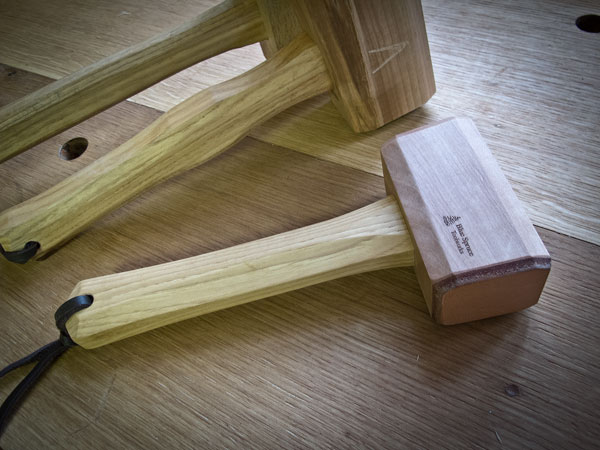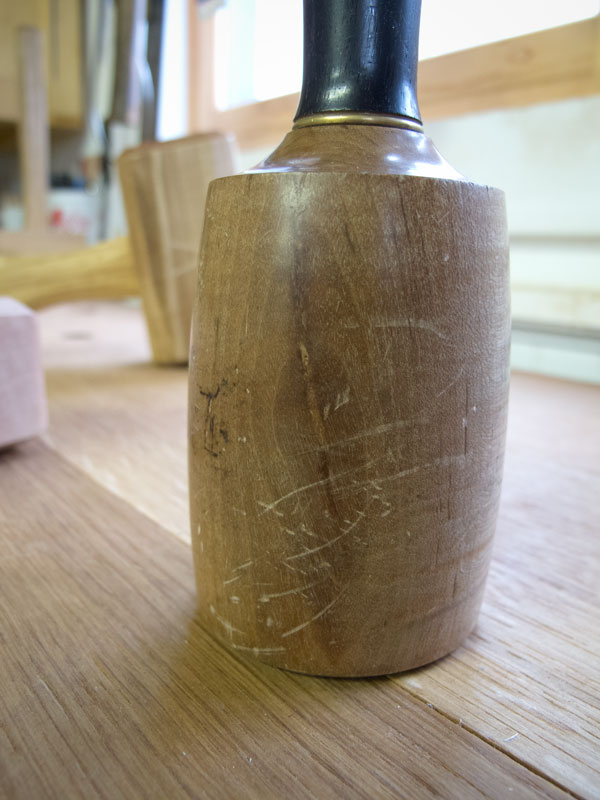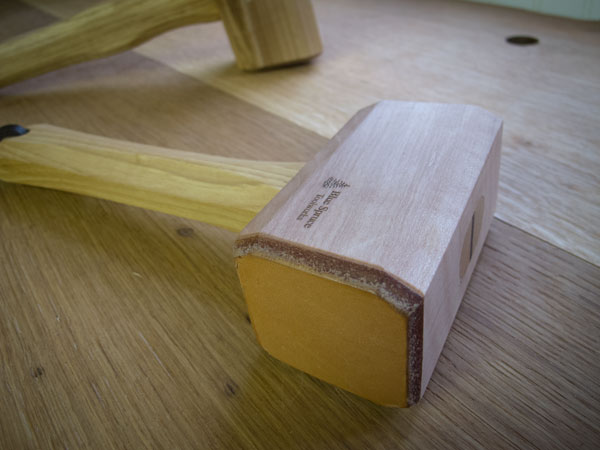We may receive a commission when you use our affiliate links. However, this does not impact our recommendations.
Blue Spruce Toolworks has just introduced a new 16 oz. square-head joiner’s mallet with a resin-impregnated head, which makes the mallet nigh-indestructible.
This little guy ($95) is similar to the 24 oz. version ($115) introduced at Woodworking in America, which I own, use and adore. Thanks to the heft and one leather-covered face of the big mallet, I gave away my old rubber dead-blow, which loved to leave black marks on everything it touched.
This smaller mallet is sized for chopping dovetails and other chisel-based joinery tasks.
I am a huge fan of these mallets with resin-infused heads. They feel like wood. They hit like wood. But they wear like iron. My 16 oz. round-head mallet from Blue Spruce has clocked thousands of thousands of dovetails now in my hands and the hands of my students. The mallet head looks barely broken in.
This is a lifetime mallet.
Wait, did you hear that? The sound of the townsfolks clanging their pitchforks and lighting torches? Indeed, there are woodworkers out there who say you should make your own mallet. And that’s totally cool in my book. But as someone who has handled many shopmade one-off mallets, I can pretty much guarantee yours won’t be as well-balanced or nicely made as a Blue Spruce. And it won’t last as long.
So I choose to support Dave Jeske and his employees at Blue Spruce and spend the extra shop time making furniture instead.
You can buy a Blue Spruce mallet here.
— Christopher Schwarz
Here are some supplies and tools we find essential in our everyday work around the shop. We may receive a commission from sales referred by our links; however, we have carefully selected these products for their usefulness and quality.












“Why you buy quality, you only cry once.” – I don’t know the source.
I get warm fuzzy feelings when I pick up my Blue Spruce mallet. It is a gorgeous tool to look at and to use. The price I paid for it has long been forgotten.
I look lustfully at all these beautiful wooden tools but many are priced far out of my reach. So I resort to fashioning my own and after recently watching an episode of the Wood Wright’s shop where Roy showed you how to make one. I made a mallet using Osage for the head and Oak for the handle and it is proving to be absolutely tough as nails and after hours of dovetailing not a mark can be seen from my Marple’s chisels.
I generally think that making your own tools is the way to go, and have passed up opportunities to buy certain all wood tools to make my own instead. It can save money, and is fun. I turned a mallet from a branch of crabapple tree and use it for adjusting wooden plane irons, dovetails, mortises, and beating my holdfasts down. It has some bumps and bruises, but it feels good in the hand and wears pretty well.
However, I really like to see encouragement for guys or companies making great wood tools for consumers as well, and although I probably won’t buy this particular mallet, I love that the folks at Blue Spruce are trying new things and putting them out there for woodworkers. I also love that Chris is writing about these tools on his blog, and promoting new ideas and tools like this!
Thanks!
Support inovation by all means.
Support your National inovators and entrepreneurs.
Resin impregnated mallets is a step too far in my opinion.
My 50 years old big beech carpenters mallet cost very little and has only had a small rag of wear shaved off at the corners; my small version shows some dents but I am certain will last my Grandaughters.( I am assuming these10 year old twins will be sufficiently inspired by my teaching and example that they will also be hand wood workers). My two lignum vitae carvers mallets show very little wear and I doubt they will in 50 to 80 years.
The leather faced mallet to replace the little black monster is a good idea and I will glue some on to one face of my big mallet tomorrow.
Perhaps I have no right to say so, and I have brooded over this response, but the trend to spend a small fortune on simple tools, that cost very little to make, is unhealthy and should not in my view be encouraged. Hardly consistent with make your own square and make your own winding sticks? Even make your own tool chest…………
How does it take your owners mark?
Smacking my holdfasts with my beech mallet is quickly turning it into a toothpick farm. How do resin impregnated mallets fare against the steel of a holdfast. Should I be using a hammer on them? Thanks for all the great articles!